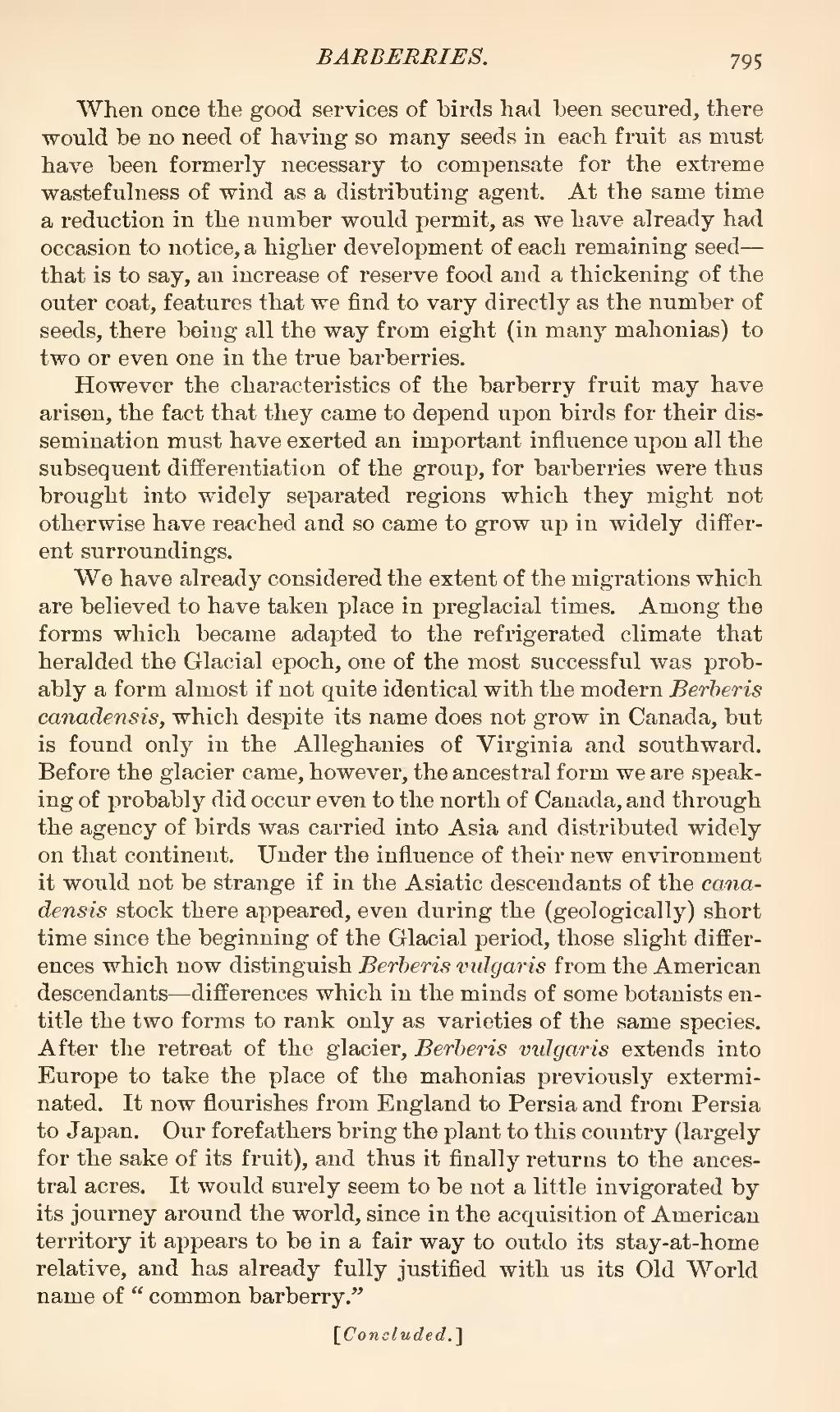When once the good services of birds had been secured, there would be no need of having so many seeds in each fruit as must have been formerly necessary to compensate for the extreme wastefulness of wind as a distributing agent. At the same time a reduction in the number would permit, as we have already had occasion to notice, a higher development of each remaining seed—that is to say, an increase of reserve food and a thickening of the outer coat, features that we find to vary directly as the number of seeds, there being all the way from eight (in many mahonias) to two or even one in the true barberries.
However the characteristics of the barberry fruit may have arisen, the fact that they came to depend upon birds for their dissemination must have exerted an important influence upon all the subsequent differentiation of the group, for barberries were thus brought into widely separated regions which they might not otherwise have reached and so came to grow up in widely different surroundings.
We have already considered the extent of the migrations which are believed to have taken place in preglacial times. Among the forms which became adapted to the refrigerated climate that heralded the Glacial epoch, one of the most successful was probably a form almost if not quite identical with the modern Berberis canadensis, which despite its name does not grow in Canada, but is found only in the Alleghanies of Virginia and southward. Before the glacier came, however, the ancestral form we are speaking of probably did occur even to the north of Canada, and through the agency of birds was carried into Asia and distributed widely on that continent. Under the influence of their new environment it would not be strange if in the Asiatic descendants of the canadensis stock there appeared, even during the (geologically) short time since the beginning of the Glacial period, those slight differences which now distinguish Berberis vulgaris from the American descendants—differences which in the minds of some botanists entitle the two forms to rank only as varieties of the same species. After the retreat of the glacier, Berberis vulgaris extends into Europe to take the place of the mahonias previously exterminated. It now flourishes from England to Persia and from Persia to Japan. Our forefathers bring the plant to this country (largely for the sake of its fruit), and thus it finally returns to the ancestral acres. It would surely seem to be not a little invigorated by its journey around the world, since in the acquisition of American territory it appears to be in a fair way to outdo its stay-at-home relative, and has already fully justified with us its Old World name of "common barberry."
[Concluded.]
